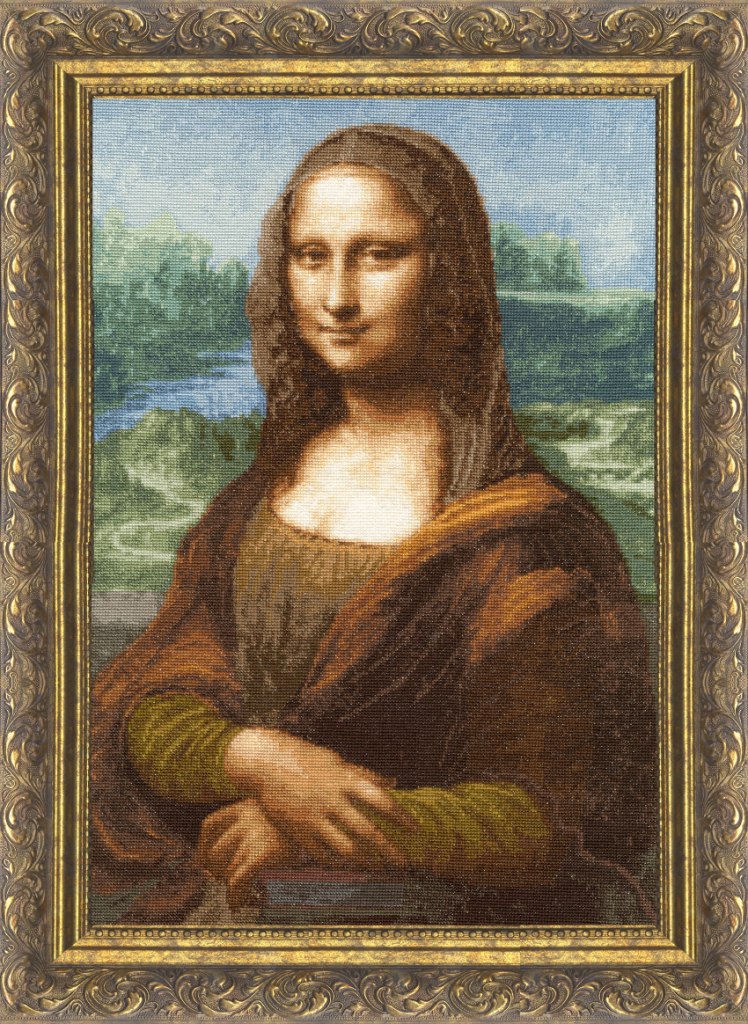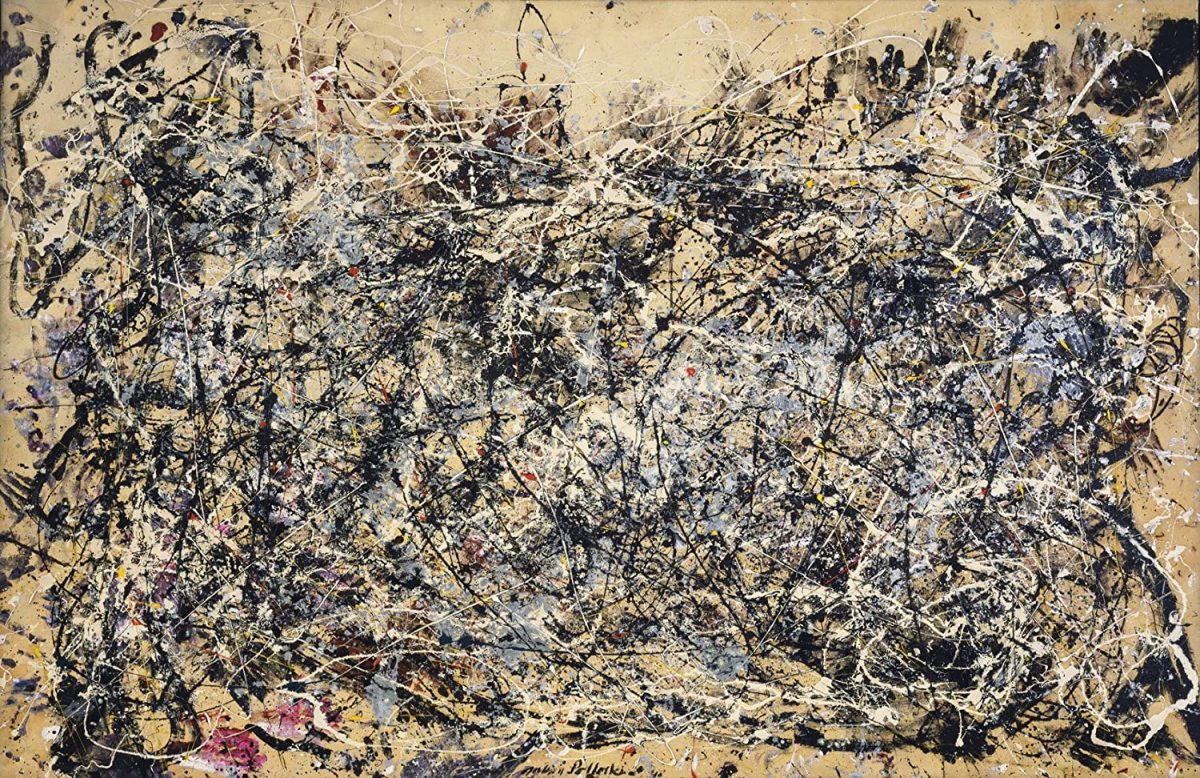Introduction
The style and medium used in art make a composition unique. Elements used in works of art dictate the level of skill and quality of the final product. This essay describes and contrasts two exceptional artworks [The Mona Lisa Painting (Da Vinci) and the Lavender Mist (Pollock)] of different genres in terms of their history, medium, technique, and elements of design.
The Mona Lisa Painting

The Mona Lisa painting is a masterpiece in representational work of art. The painting dates back to the 1500s in Florence, Italy (Strickland and Boswell, 32). The painting is unique because of the diverse technologies used in its creation.
Element of Design
For an inexperienced art enthusiast, the Mona Lisa composition is straightforward and standard, but this is not the case. L. Da Vinci used an element of composition called pyramidal, which makes this painting unique. The pyramidal element of the Mona Lisa painting, shows the theme of the painting (Mona Lisa), with a wider bottom by her hands as well as her arms outlining the front curvature. All these elements of the painting are in place to illustrate the eyes, high Mona Lisa’s body and her recognizable grin.
The Mona Lisa pose, is an element of design that sets this painting apart from other oil paintings of the 1500 era and even today (Visual-arts-cork.com). Mona Lisa appears relaxed in this painting. This element of design is hard to attain in a painting, even today. Mona Lisa is seen in this painting to be at ease, as she bends forward on the armrest of the chair. To attain this in a composition, an artist requires being exceptionally skillful. Another element of design in this masterpiece that makes it unique is the positioning of the eyes. The subject’s eyes are at the same eye level with the viewer.
The background of the Mona Lisa painting brings out an element of design that is unique to a 1500s painting. Both the theme and backdrop in the Mona Lisa are in sharp focus with a mixture of details. The Mona Lisa painting backdrop appears faded, or indistinct as well as out of focus, the further it extends from Mona Lisa. The backdrop colors in the Mona Lisa are mild, soft and faint, to some extent thus leaving the subject as the point of focus. Other elements of design used in the painting include lighting to pull the eye of the observer, and shadowing to add intensity as well as a dimension to specific aspects of the image of Mona Lisa.
Medium of the Painting
The Mona Lisa painting stands out from other paintings of the 1500 era because of the technique, and the medium used to create the masterpiece. Da Vinci pioneered the use of oil as a medium in art, through the Mona Lisa composition. The 1500s artists worked extremely hard to create art pieces, but they experienced a ruthless challenge, which was their paint. In the Mona Lisa, Da Vinci used a unique painting technique that entailed mixing two different media, a pigment to produce color and a binder to hold the pigment on the surface being painted (Buser, 193).
Glazing
Glazing is the technique used by Da Vinci to create the smoky effect, observable around the eyes and mouth of Mona Lisa (Leslie, 183). This technique entails applying several coatings of very thin glaze. The blurring and shadowing effect in the Mona Lisa was achieved through the glazing technique (Buser, 194). Scientists suggest that the artist L. Da Vinci, managed to create the smoky effect of the Mona Lisa composition by glazing with his fingers.

History
This composition by Jackson Pollock differs from the Mona Lisa radically, in terms of the element of the design, medium, and technique. The Lavender Mist is a 1950 painting, while the Mona Lisa is a renaissance period painting. The Lavender Mist is made from enamel and oil (National Gallery of Art). Contrasted to the Mona Lisa, the Lavender Mist is an abstract art form, while the Mona Lisa is a representational form of art. The making of the Mona Lisa entailed meticulous application of paint, while the Lavender Mist was created by pouring paint on unprimed canvas (National Gallery of Art).
Technique
The technique used by Pollock in this composition is innovative as the technique used by Da Vinci. The two techniques also differed because Da Vinci glazed the Mona Lisa painting with his fingers, while Pollock circled covering the print, flinging, drenching, as well as splattering skeins of paint on the surface of the canvas, coat upon coat, until a thick web of tint was produced. The other difference between the Mona Lisa and the Lavender Mist is that, the technique in the latter is spontaneous despite being remarkably almost perfect, while the earlier composition technique is meticulous. The Lavender Mist technique is known as “drip” painting, while the Mona Lisa’s is known as glazing (National Gallery of Art).
Element of the Design
The element of the design in the Lavender Mist is in the recurring movements of the extended arcs, faltering, coagulated collections of paint that accumulated into an abounding, gleaming interlace (National Gallery of Art). Pollock managed to attain a mild tonal effect with just a few shades of color. On the other hand, Da Vinci managed to attain the smoky effect in the Mona Lisa with over forty glazes. The other evident element of design in the Lavender Mist, is the natural linear structure that is exhibited all over the composition without noticeable focal points.
Objective Analysis
Both the Mona Lisa and the Lavender Mist works of art are adept. The Lavender Mist is skillful because, despite being an abstract art that was created using a spontaneous technique of dipping, it shows detailed element of the design such as a natural linear structure that standard abstract art rarely achieves. The Mona Lisa painting is skillful because, the artist managed to highlight the backdrop of the painting, and at the same time focus the subject of the composition. Moreover, the Mona Lisa work of art was created with no tools such as a brush, and it appears symmetrical. Symmetry is difficult to achieve in a hand-drawn composition.
The Composition Appeal
The Mona Lisa is appealing because it evokes intimacy. In addition, the subject has an inviting demeanor. The Lavender Mist is not appealing because it appears obscure, and requires a background in artwork to understand.
Works Cited
Buser, Thomas. Experiencing art around us. Australia; United States: Thomson Wadsworth, 2006. Print.
Italian-Renaissance-Art.com. The Mona Lisa. 2012. Web.
Leslie, Davis, Margaret. Mona Lisa in Camelot How Jacqueline Kennedy and Da Vinci’s Masterpiece Charmed and Captivated a Nation. Philadelphia PA: Da Capo Press, 2009. Print.
National Gallery of Art. Jackson Pollock; Number 1, 1950 (Lavender Mist), 1950.2012. Web.
Strickland, Carol and John Boswell. The annotated Mona Lisa: a crash course in art history from prehistoric to post-modern. Kansas City: Andrews and McMeel, 1992. Print.
Visual-arts-cork.com. Oil Painting.Web.